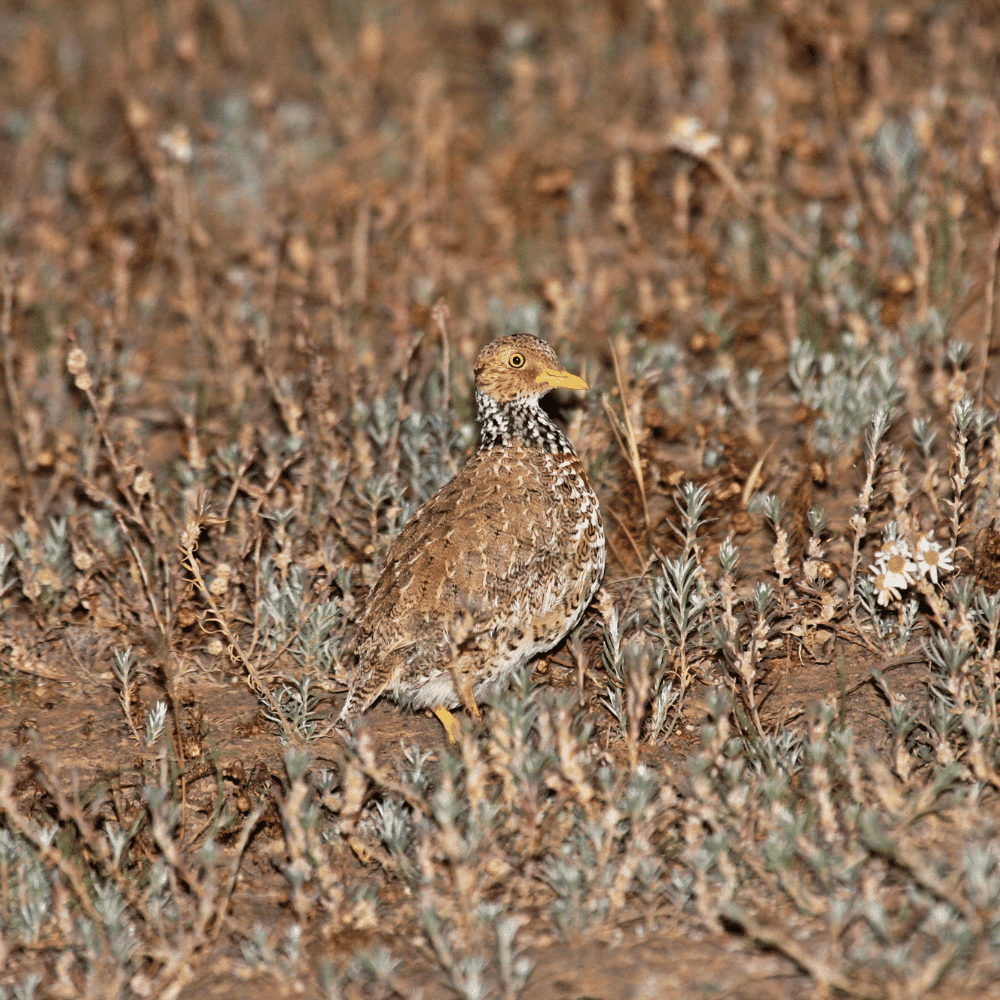Radio-tracking Plains-wanderer
MONITORING SPECIES
The Plains-wanderer (Pedionomus torquatus) is a captivating bird species found primarily in Australia, particularly in grasslands and open plains. In regions like Victoria and New South Wales, the Plains-wanderer thrives in diverse habitats, preferring areas with a mix of grasslands, shrublands, and scattered trees. These habitats provide essential transition zones known as “edges,” facilitating movement between nesting, foraging, and sheltering sites.
Populations of the Plains-wanderer are subject to fluctuations influenced by factors such as rainfall, temperature, land use patterns, and habitat quality. Understanding these dynamics is vital for their conservation. Unfortunately, the Plains-wanderer faces numerous challenges, including habitat loss, agricultural intensification, and predation by introduced species. Conservation efforts are crucial to safeguarding these unique birds and preserving their habitats for future generations.
Tracking ground-dwelling birds
Plains-wanderers inhabit grasslands and open plains characterised by sparse vegetation, making traditional manual tracking methods challenging. Wildlife researchers often spend extensive hours navigating these terrains while holding radio receivers and antennas aloft to locate tagged birds. However, Wildlife Drones’ drone-based telemetry system offers a revolutionary solution. Our drones can cover expansive areas of up to 80 hectares in a single flight, surveying any terrain with precision, including rugged landscapes. This efficient and effective wildlife tracking method minimizes fieldwork time and maximises data collection efforts, contributing to better understanding and conservation of Plains-wanderer.
Track up to 40 radio-tagged birds simultaneously
Tracking birds with radio telemetry has been the go-to method for anyone seeking to understand movements. However, the effort involved in finding tagged birds using hand-held receivers has always been a costly and daunting task. Due to the limited detection range, many people have traditionally spent hours traipsing across vast (and sometimes inhospitable) terrain whilst holding a radio receiver and yagi antenna aloft for hours on end in the hope of detecting their tagged birds.
In contrast, using Wildlife Drones to track birds you can cover up large areas in a single flight and gain confidence on where the birds are (or aren’t) across the landscape. Drones are perfect for any terrain and can survey even the most rugged of mountains. Radio-tracking drones are proving to be an efficient and effective solution.

Categories: #EndangeredSpecies

